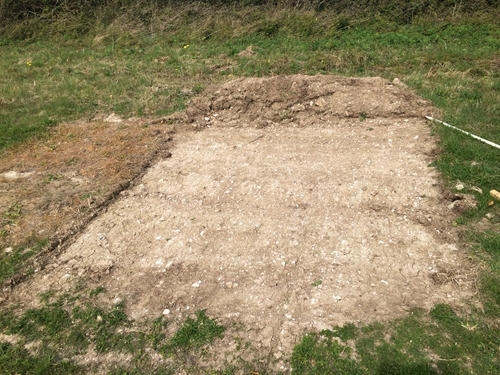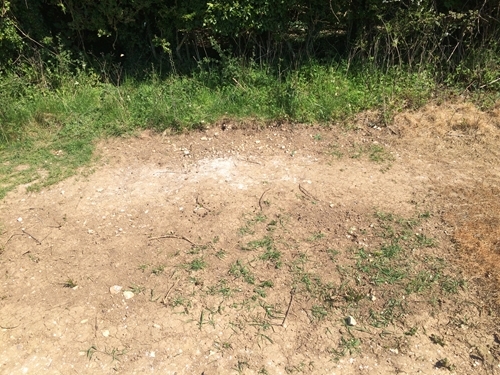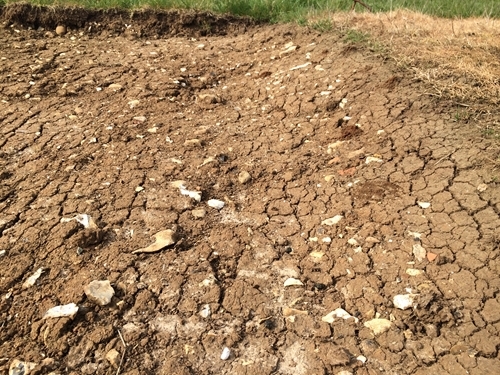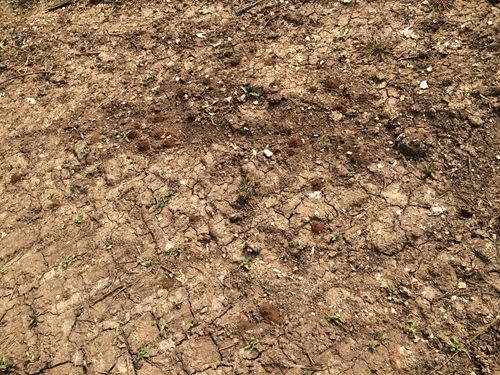Ground-nesting solitary bees such as some furrow bee and mining bee species like to nest in bare, firm, sometimes sloped ground. To encourage more bees to nest on farmland, these conditions can be easily recreated. Select a grass margin or verge on the south side of a hedgerow or with a south facing slope. It can be on or near tramlines that can remain in use during the summer season. Create the scrape in February/March ready for colonisation by solitary bees from April.
Use machinery with a bucket to remove the top layer of substrate as shown in the first picture. Aim for a plot of two-metres by twometres. Create multiple scrapes around the farm to identify which area is preferential for colonisation by solitary bees, noticeable by small conical mounds of soil. If possible, as the scrapes become overgrown by vegetation during the year, create new scrapes alongside the originals (by early June). Then, in the following year create another scrape along the same margin/verge, but not over the previous scrapes. Try not to re-scrape the original plots for two years as these will contain bee nests that could be damaged before the new bees have emerged from the nests.

1. Use a digger with a bucket attachment to scrape a two-metre wide top layer of substrate from the ground, ideally on a south facing slope or hedgerow

2. A scrape made on the south side of a hedgerow in the field margin. The scrape is not too deep, with the remaining soil left so it can be flattened back down in the future.

3. A scrape made at the base of a hedge in the tramlines with the soil left at the head of the scrape. A small amount of grass has already grown up again but the majority of the scrape has remained bare.

4. Solitary bees favour the steepest section of the scrape when building nests, so a slope is always preferential.

5. Small conical mounds of soil show that solitary bees are building nests.